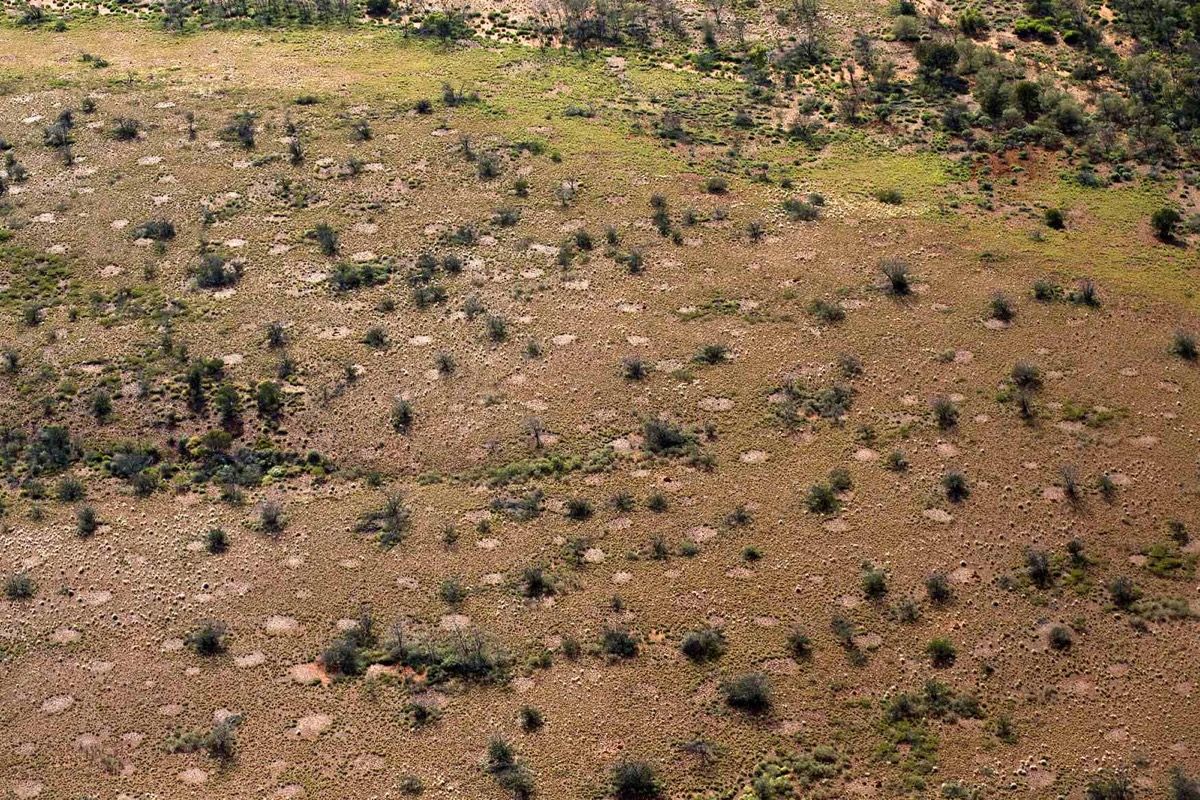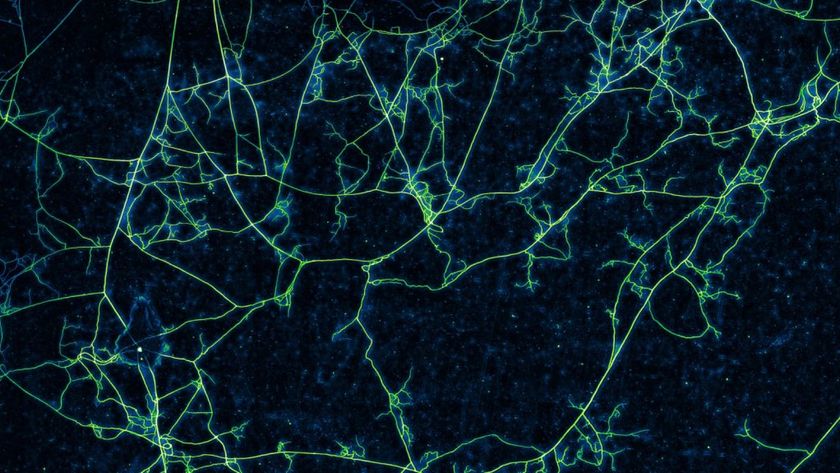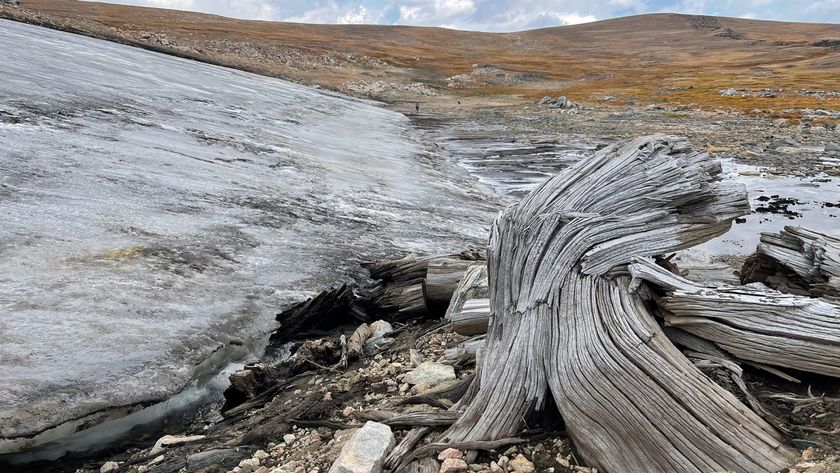Are 'Fairy Circles' Just the 'Ghosts' of Termite Nests?

The discovery of fairy circles in Australia earlier this year has hardly put to rest the controversy over how these mysterious structures form.
"Fairy circles" are regular, repeating patches of dirt in remote grasslands that, when viewed from above, look like whimsical rings that were scattered across a landscape. Despite their fanciful appearance, the patterns have been a source of serious scientific debate for the last four decades. While some have argued that the geometric patterns are the work of termites, others have postulated that the circles form naturally as vegetation self-organizes in competition for scarce water and other nutrients.
Previously, these patches had been observed only in southeastern Africa, mostly Namibia, but in March, a group of researchers announced that they had identified fairy circles in satellite images and during fieldwork in Western Australia. [See Stunning Photos of Fairy Circles in Australia]
Led by ecological modeler Stephan Getzin of the Helmholtz Centre for Environmental Research in Leipzig, Germany, this research team claimed that their discovery supported the theory that fairy circles were a pattern caused by the competition for water. According to this theory, which was detailed in the journal Proceedings of the National Academy of Sciences (PNAS) earlier this year, the biggest and most competitive grass plants take up the most water, leaving their weaker neighbors to die out. Over time, barren patches pop up where the weaklings once grew, with a hard, sunbaked crust of soil that doubles as a rainwater collection pool. Thirsty plants then form a circle around this crust, maximizing their access to this water, and thus, fairy circles are born.
But now, a separate group of researchers in Australia disputes those claims. In a rebuttal published in PNAS this month, ecologist Fiona Walsh of Australia's Commonwealth Scientific and Industrial Research Organisation (CSIRO) and her colleagues point to termites as the culprits behind these fairy circles.
Walsh's team says that these barren patches are quite common across the dry grasslands from Western Australia to the Northern Territory. Using crowbars, they dug into the centers of circles at four different locations and found that all had concreted soil and chambers made by termites of the genus Drepanotermes. Not all of these termite nests, or termitaria, were active, however. The scientists said that the soil in these circles can become so hardened by termites that the patterns may last for decades after the termite colonies are abandoned, leaving behind the "ghosts of termitaria past."
"These new Australian data suggest that a termite hypothesis for African circles …should be revisited, despite being rejected by the Getzin team," Walsh said in a statement. She also argued that local knowledge could contribute to the understanding of the circles, as the indigenous people of Australia have long attributed those barren desert patches to termites.
Sign up for the Live Science daily newsletter now
Get the world’s most fascinating discoveries delivered straight to your inbox.
Because these spots lack prickly grass called spinifex, the people who live in the region have incorporated these flat circular areas into their walking paths and have used them as comfortable sitting areas to do things like grind seeds, the researchers of the rebuttal said.
"Older desert people also sweep the circular hard spots as a place to prepare foods and artifacts," Walsh said in the statement. Walsh said that her colleague Gladys Bidu, a Karimarra woman and ranger, "recognizes these spots as an unquestionably 'normal' feature made by termites — as ubiquitous to her as footpaths are to any city-dweller who also knows wiring and plumbing is under the pavement."
In a response to the rebuttal, Getzin and his colleagues stood by their original findings. Though termites can cause bare patches in grasslands, the researchers still don't see any correlation with these circles and termite activity.
As Walsh told Alice Springs News: "A healthy scientific process is underway, reply and counter-reply, but we do not yet have reason to waver from our conclusion."
Original article on Live Science.













